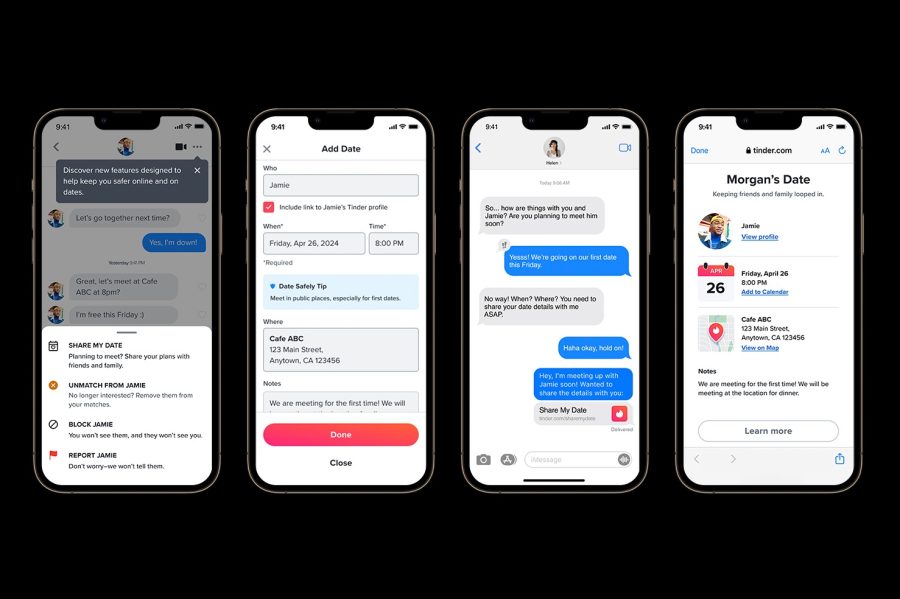Starting a new tech company is a labor of love. Particularly in the beginning, when funds are low, expectations are high, and the product is still a twinkle in the developer’s eye, stressful situations under external pressures can lead to pull-the-plug moments.

When we interviewed Pandora founder Tim Westergren last week, he shared his personal brush with startup death: In 2007, it seemed that the music-streaming site would have to declare bankruptcy and close shop. Pandora’s success is one reason to stick with your own startup. Here are six more.
Quick Growth Is a Good Thing, Right?
In the heat of SXSWi 2009, Twitter users started snarking that
was down. The service had grown exponentially in the month or two before the geekfest, and founder Noah Everett said the sudden spike in adoption and use caught him completely off-guard.
During that month, the one-man-show known as Twitpic “was barely usable and breaking all the time; and as you know, users on Twitter are very vocal about something when its not working,” said Everett via email.
“The decision I had to make was to either shut the site down – since it was basically broke – or suck it up and fix it as fast as possible. I locked myself in my apartment for two weeks straight. I turned off the phone, Twitter, email. And I recoded the site and put together a scalable hardware platform to run Twitpic on. It worked and took two weeks less time than it should have.”
You Don’t Touch a Man’s Wheels
Bootstrapper Tom Blue, who founded
in 2001, wrote us to tell about the time this cardinal rule was broken.
“I am sitting in my office and I hear my car alarm go off. I run out to the parking lot to see my car driven off by the repo man. Sad, but true.”
Blue said he convinced the bank to return the car and got family to loan him some money. But the process was costly and a huge waste of time. “After that moment, I realized that mentality is stupid. I should only focus on what is productive. I streamlined my focus on what was important – and at the bare minimum, cash flow is important.”
From the depths of financial catastrophe, Blue persevered, and his startup saw staff grew and revenues tripled in 2004 and doubled again in 2005. Ultimately, wrote Blue, “It was actually one of the best lessons I have learned.”
The Mundane Details
emailed us to share his own story. “I’m discovering that there are a couple of different scary startup moments – the dramatic cliffhangers (new company teetering on the brink; new company meets sexy venture capitalist; new company takes off) I think are dwarfed by the mundane (waking up every day wondering if there’s enough cash in the bank).
“Nine months into my own startup, I’ve discovered a nice middle ground.”
But that comfortable middle ground was nowhere in sight when Sarvay woke up the morning after his startup’s launch party with a severe case of entrepreneur’s remorse.
“I realized I’d spent more on the launch party than all of my other business marketing. In the first three months of 2009, I brought in three percent of what I earned the previous year. The economy was continuing to melt down. I was insane thinking I should launch a business on my own.
“That lasted three days.”
Little by little, cash started flowing in. By this May, Sarvay wrote, “We had enough cash flow to actually pay our bills for the month – both for the business and for our household. Going into July, we have enough to pay those bills for three months.”
“This whole startup process has been simultaneously terrifying, stupid, exhausting, exhilarating, and validating. It’s the smartest thing I’ve ever done. If I’d done it three years ago, I’d have failed. I might still fail. But I don’t regret one second of it.”
Surviving the First Bubble
CEO Brian Williams wrote us about his startup’s survival, not just through recent financial storms, but through the first dotcom crash, as well.
“We started Viget in late 1999 with a few funded startups as clients, no funding ourselves (bootstrapped), and a lot of reason for optimism. Within a year, the dotcom era imploded, our clients had lost their funding, and it was no longer cool to be a consultancy run by 20-somethings. We were barely making payroll and considered throwing in the towel.”
But instead of quitting, the team made one last effort, pitching to one of the few surviving startups in that time. “We were sweating bullets as we waited to hear back from them…
Happily enough, they liked our proposal and hired us. I still remember coming up with some reason why we were going to be in their neighborhood that afternoon and could pick up the retainer check then instead of waiting until the kickoff meeting. I didn’t mention that we needed it to make payroll.”
Williams notes his company is now 40 staffers strong and still working with startups. And since that dotcom bust, he wrote, “We’ve never missed payroll, never had layoffs. And although it has indeed been (and continues to be) a lot of hard work, I’ll always be thankful that we decided to stick it out.”
Thirty-Seven Cents and a Heart Full of Hope Adrenaline
founder Gerald Buckley went so far as to share the exact dollar amount of his worst fears realized:
“I was $0.37 away from closing it up. Literally, that was all I had left in the bank account. There wasn’t enough to pay next month’s legal bills.”
However, a dramatic turn of events saved him and his startup at the last minute. “In mid-November, Grocio won top prize in a local business model competition sponsored by the City of Tulsa and a local bank. That put $30K in the bank (non-equity, non-debt). Then the state of Oklahoma awarded us $100K matching funds (again, non-equity, non-debt). Money became less an issue and allowed us to focus on execution.”
Although the economy began changing the equation once again last fall, Buckley encourages other startups, “I’m going to have the startup bug all my life, I think. NEVER give up if you really believe!”
When Worse Comes to Worst
However, we’d be a bunch of cockeyed optimists if we didn’t admit that sometimes, even the best teams and the best ideas can fail.
Serial startup techie Dan Bedford wrote us to share a story of lessons learned the hard way. “In the summer of 2005, I was starting up an internet video platform. We had dreams and aspirations of being this all-encompassing entity… The technology was decent, and it had potential.”
The company started getting some interest from angels, and the staff got excited. Until one of the investors started bringing his own staffing picks into executive positions, that is.
“This is where is started to get fishy. A lot of money was being funneled to these people he hired… The company was bleeding money to a select few individuals who put not an ounce of their blood, sweat, and tears into the company.”
During this time, the stock market crash began to unfold. Not so slowly, investors backed away. “We were left out to dry, and dry we did,” wrote Bedford. “Jobs were cut down to the core, and not too long after that, we had to close our doors.”
But Bedford, who is still working in the tech startup space, refuses to let one closure set his course. “I don’t dwell on the negatives of the experience. Learning from the negatives and applying it to something positive is the way to go with this kind of business, I have found.”
As many startups can attest, it takes a whole lot of failure to break through the barriers to success. In the words of one tireless innovator, “I have not failed. I’ve just found 10,000 ways that won’t work.”
And, as Bedford wrote, “Any experience with startups is a good experience.
“You always have to evolve with the environment because it’s constantly changing all the time. That’s not something you can get in an established corporation; all those protocols have been worked out before you came and are now set in stone. It’s the involvement in building something new that true entrepreneurs are addicted to. And I don’t regret it one bit.”










